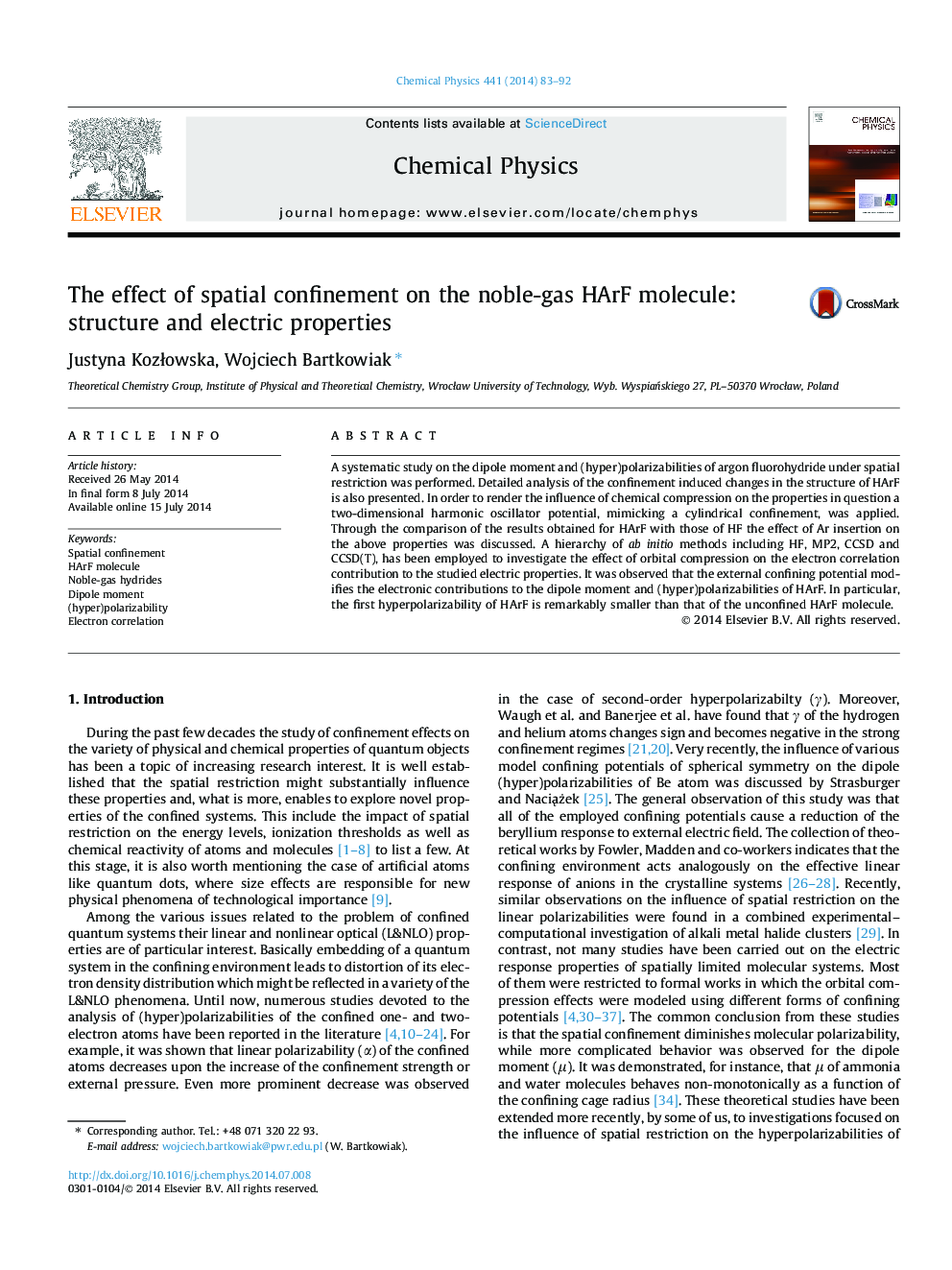| Article ID | Journal | Published Year | Pages | File Type |
|---|---|---|---|---|
| 5373549 | Chemical Physics | 2014 | 10 Pages |
â¢The structure and electrical properties of HArF in spatial confinement are analyzed.â¢Orbital compression leads to decrease of bond lengths in the HArF molecule.â¢Spatial restriction causes a drop of the molecular (hyper)polarizabilities.â¢Spatial confinement reduces the electron correlation contribution to μ, α and β.
A systematic study on the dipole moment and (hyper)polarizabilities of argon fluorohydride under spatial restriction was performed. Detailed analysis of the confinement induced changes in the structure of HArF is also presented. In order to render the influence of chemical compression on the properties in question a two-dimensional harmonic oscillator potential, mimicking a cylindrical confinement, was applied. Through the comparison of the results obtained for HArF with those of HF the effect of Ar insertion on the above properties was discussed. A hierarchy of ab initio methods including HF, MP2, CCSD and CCSD(T), has been employed to investigate the effect of orbital compression on the electron correlation contribution to the studied electric properties. It was observed that the external confining potential modifies the electronic contributions to the dipole moment and (hyper)polarizabilities of HArF. In particular, the first hyperpolarizability of HArF is remarkably smaller than that of the unconfined HArF molecule.
Graphical abstractDownload full-size image
